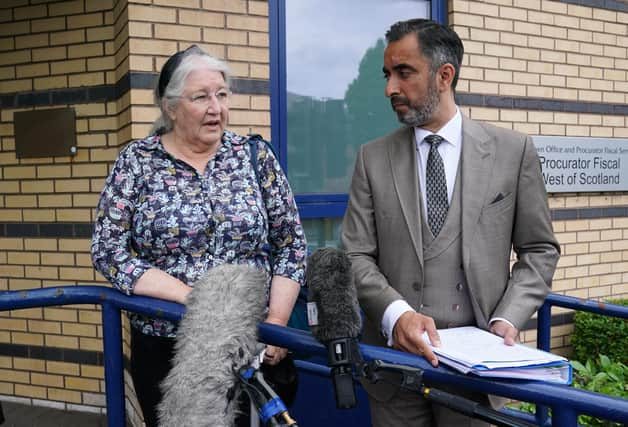The lasting impact of murder and culpable homicide – Karyn McCluskey


Her family have said how their lives were changed forever and how much they miss her. Two-dimensional words behind which is a world of pain.
Last week another face appeared in newspapers bringing me a rush of emotions. Emma Caldwell, whose shock of blonde curls, dressed in a black jacket and top first appeared across the front pages of Scottish newspapers in 2005 after she was killed and her body dumped.
Advertisement
Hide AdAdvertisement
Hide AdHer face was projected onto a building 40-feet high to raise the profile of the case and appeal for witnesses.
I rather hoped that the language used in the media after Emma’s death in 2005 would have changed by now, but it hasn’t much. She wasn’t described as a young woman, sister, daughter or just Emma: she was a “Glasgow prostitute”. No one had the right to take Emma’s life, everyone deserves to be safe. Emma deserved to be safe.
Margaret Caldwell, her mum, has kept Emma’s memory alive, humanised her as a 27-year-old woman who adored horses, who lost her sister Karen to cancer. Emma developed an addiction to drugs, her life twisted and she turned to selling sex to fund her drug needs.
Her family were always there, supporting Emma, seeking out rehab places and support. Never giving up. It is her mum’s face that struck home – a bereaved parent, never letting people forget, giving life to Emma who had hers taken 17 years ago.
Many years ago, a bereaved parent, Joyce, asked me for some help in holding a service at Glasgow University Chapel for all those who had lost someone through murder or culpable homicide.
She organised a primary school choir to sing This Little Light Of Mine at the service and asked people to bring pictures of those who had died.
We turned up not knowing how many people would arrive, if any. Yet even before we arrived people were waiting, pictures ready, clutching them to their chests in glass frames.
These were pictures that had sat on their mantelpieces as constant reminders of the loved ones missing from dinner tables and family gatherings. Reminding them of how they were robbed of a future; the grandchildren who were never born, the graduations that never took place, careers and aspirations that were never fulfilled, marriages and partnerships they never got to see.
Advertisement
Hide AdAdvertisement
Hide AdMany of the people in the pictures had been killed decades before. The trauma of the murder often passed to the next generation of the family, who knew everything about the person yet had never met them. The conversations and the rawness were of events that could have taken place yesterday or that morning. Disbelief, injustice, loss and anger.
The anniversary of Dunblane also happens in March – the passage of time, is often just that, it changes nothing. No one can tell anyone how to experience grief. Some manage to craft a way of existing and living, others remain in stasis.
Margaret Caldwell and others represent the best of us – a fighter for justice, who could be a mum, dad, partner or sibling. The epitome of resilience and love.
Karyn McCluskey is chief executive of Community Justice Scotland
